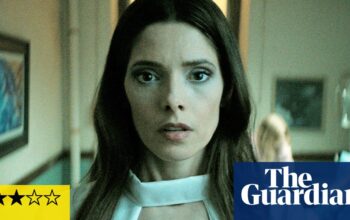J
Joanna Hogg’s most recent movie, The Eternal Daughter (currently in theaters), tells the story of a mother and daughter, both portrayed by Hogg’s frequent collaborator Tilda Swinton. They stay at a secluded hotel where the ghosts of the past linger. The film is a hauntingly atmospheric piece, showcasing Hogg’s understated yet powerful style. It also shares a similar sense of unsettling normalcy as Jonathan Miller’s iconic 1968 television adaptation of MR James’ Whistle and I’ll Come to You.
Hogg received encouragement from her executive producer, Martin Scorsese, to create a ghost story, as he believed she was in the perfect stage of her life and career to do so. However, Hogg’s previous films have always been influenced by the presence of ghosts. While The Eternal Daughter may be her first movie to openly embrace this genre, it draws upon familiar themes and concepts that are a key part of her filmmaking style.
After gaining experience in TV, Hogg’s initial two movies showcased remarkably precise depictions of uncomfortable human connections, leading to comparisons with Ozu and Chabrol’s works. Critic Sukhdev Sandhu accurately described Unrelated (2007) as “unlike any other British film in its look, feel, and sound”, while reviewer Anthony Quinn described Hogg’s first film as focusing on a group of individuals who may irritate you but will still have a lasting impact.
The central focus of this story is on wealthy British individuals spending their summers in Tuscany. Kathryn Worth’s character, Anna, is in her forties and feeling dissatisfied as her partner, Alex, should be there with her but is instead absent, only communicating through a fading mobile phone signal. A similar theme of presence and absence is present in Archipelago (2010), another highly acclaimed film that, like Unrelated, features rising star Tom Hiddleston in a leading role. Hiddleston portrays Edward, a troubled young man on a tense family vacation on the island of Tresco, where the characters (much like the island itself) are isolated and divided by emotional barriers. Edward’s mother, Patricia, has invited her estranged husband to join them, but once again, strained one-sided phone conversations highlight a void similar to that in Waiting for Godot. The lack of background music and static camera shots add to the somber tone of the film.

Hogg’s first two films explore the outskirts of a somewhat absurd tragedy, with much being conveyed through unspoken interactions. However, her third film, Exhibition (2013), delves into the inner workings of a haunted house – a modernist home that is up for sale and may have been designed to keep its quarrelsome inhabitants apart. Viv Albertine, former guitarist for the Slits, plays D, who is struggling with the complexities of performance art while her husband H (artist Liam Gillick) remains secluded in his computer room upstairs. Their communication is limited to an intercom system, with exchanges such as “Shall we have sex?” and “Can you fix the boiler?” The house itself is connected by a spiral staircase that resembles a massive DNA helix, further emphasizing its organic nature – as if it is a living, breathing entity.
The street outside is being loudly excavated, while the interior of these so-called “living spaces” produces a constant din that brings to mind restless ghosts in an old, creaky mansion. With a touch of surreal imagination (blending past and present, fragmenting personalities), Exhibition could be considered a ghost tale masquerading as a romantic drama – or the other way around.

This brings us to Hogg’s most famous creation, The Souvenir, a two-part series inspired by her own life experiences. The story follows a young film student, played by Honor Swinton Byrne, who becomes enamored with the mysterious Tom Burke in the first film. In the second film, she grapples with the lingering effects of their relationship. In my review for the Observer, I described it as “a recollection of a recollection (or a dream of a dream?)… a depiction of the artist as a young woman discovering her own voice.” However, it also serves as a poignant and uplifting portrayal of love, loss, memory, and renewal – all elements commonly found in traditional ghost stories.
In the past, I have conducted multiple interviews with Hogg (born in 1960) and have always been amazed by her intense work. Despite this, I have been surprised by her personal viewing preferences. She enjoys movies like Bob Fosse’s Sweet Charity (and hopes to create a musical one day) and is also a dedicated fan of disaster movies that both frighten and comfort her (as they put our own problems into perspective). Additionally, she finds the chaotic animated series Rick and Morty hilarious, especially the episode Rattlestar Ricklactica which involves snakes from space.
As for Hogg’s own ghosts, they are seemingly exorcised on screen – transfigured through the medium she was born to practise.
All titles can be rented on various platforms, unless otherwise stated.
What other things am I currently enjoying

Party Lines
Subtitled “Dance Music and the Making of Modern Britain”, Ed Gillett’s self-read audiobook has been my constant companion recently, brilliantly exploring how the UK establishment has variously banned, vilified and co-opted potent dance culture.
One Night
The TV drama on Paramount+ is glossy and may have a contrived storyline, but Jodie Whittaker and the rest of the cast give convincing performances that bring to life a complex story about consent and authorship.
The hidden gardens of Cornwall.
Tim Hubbard’s ravishingly illustrated walk through Cornwall’s paradisal gardens with the people who made them is the perfect antidote to the bleak midwinter blues. A delight.
Source: theguardian.com


